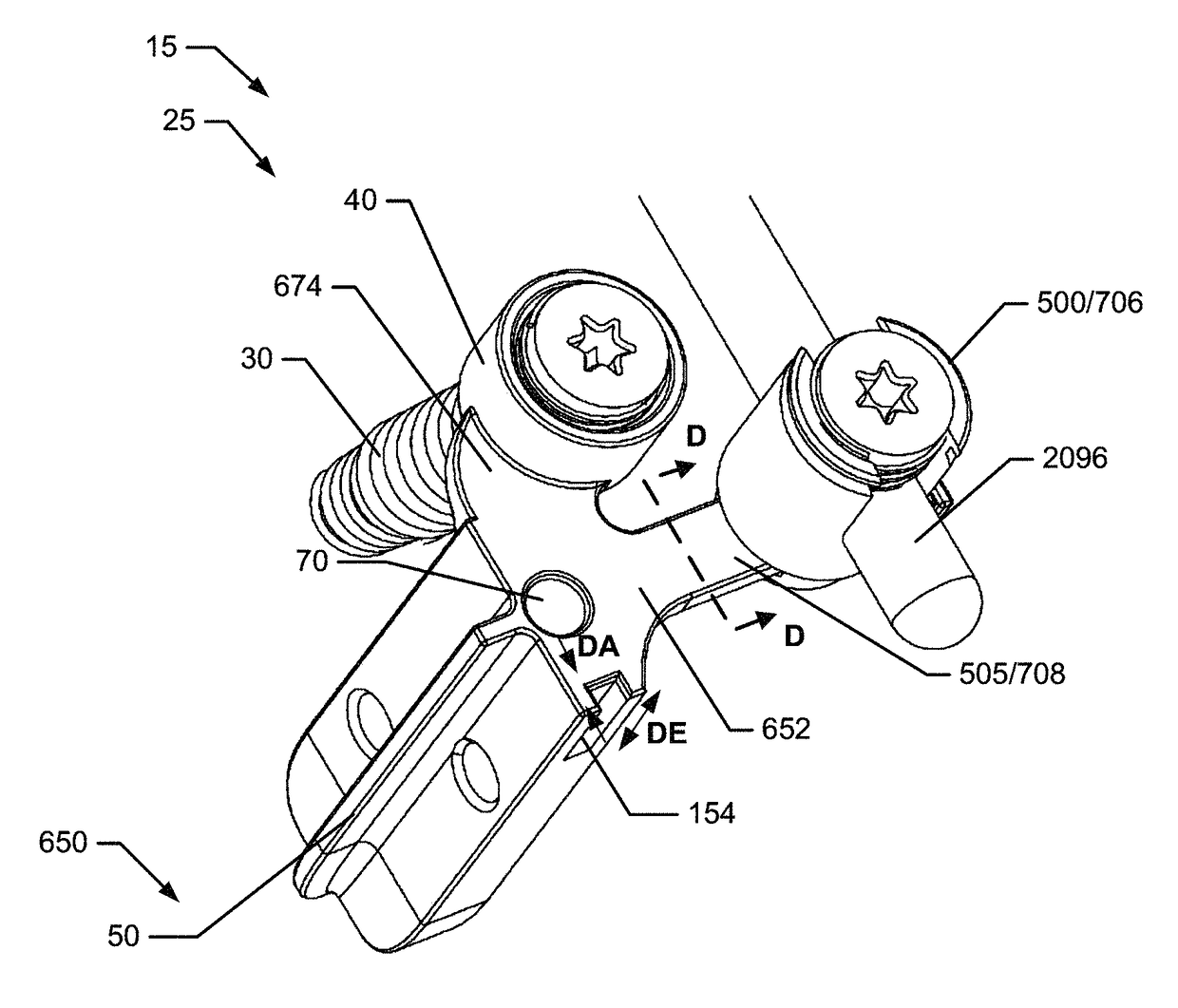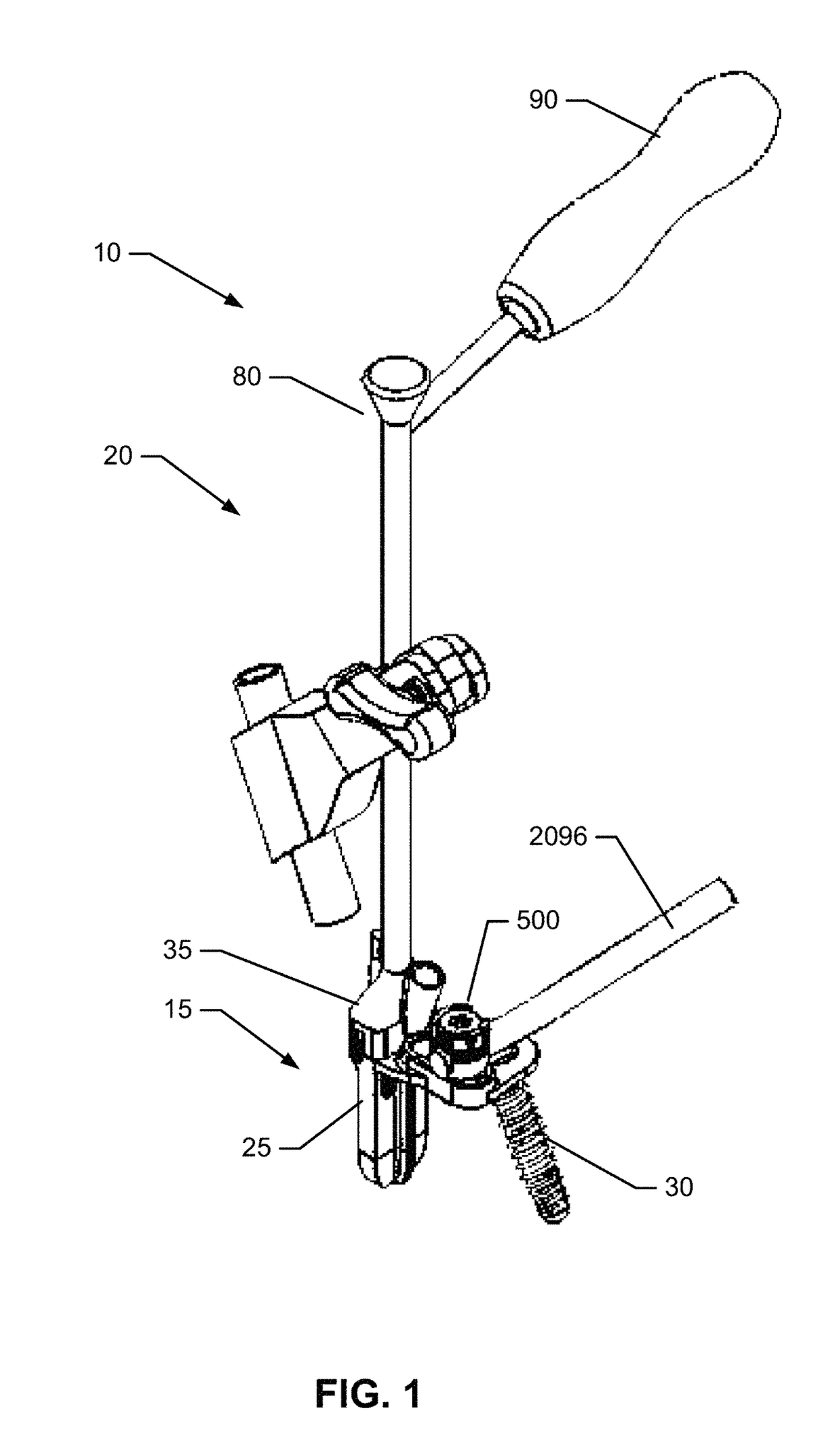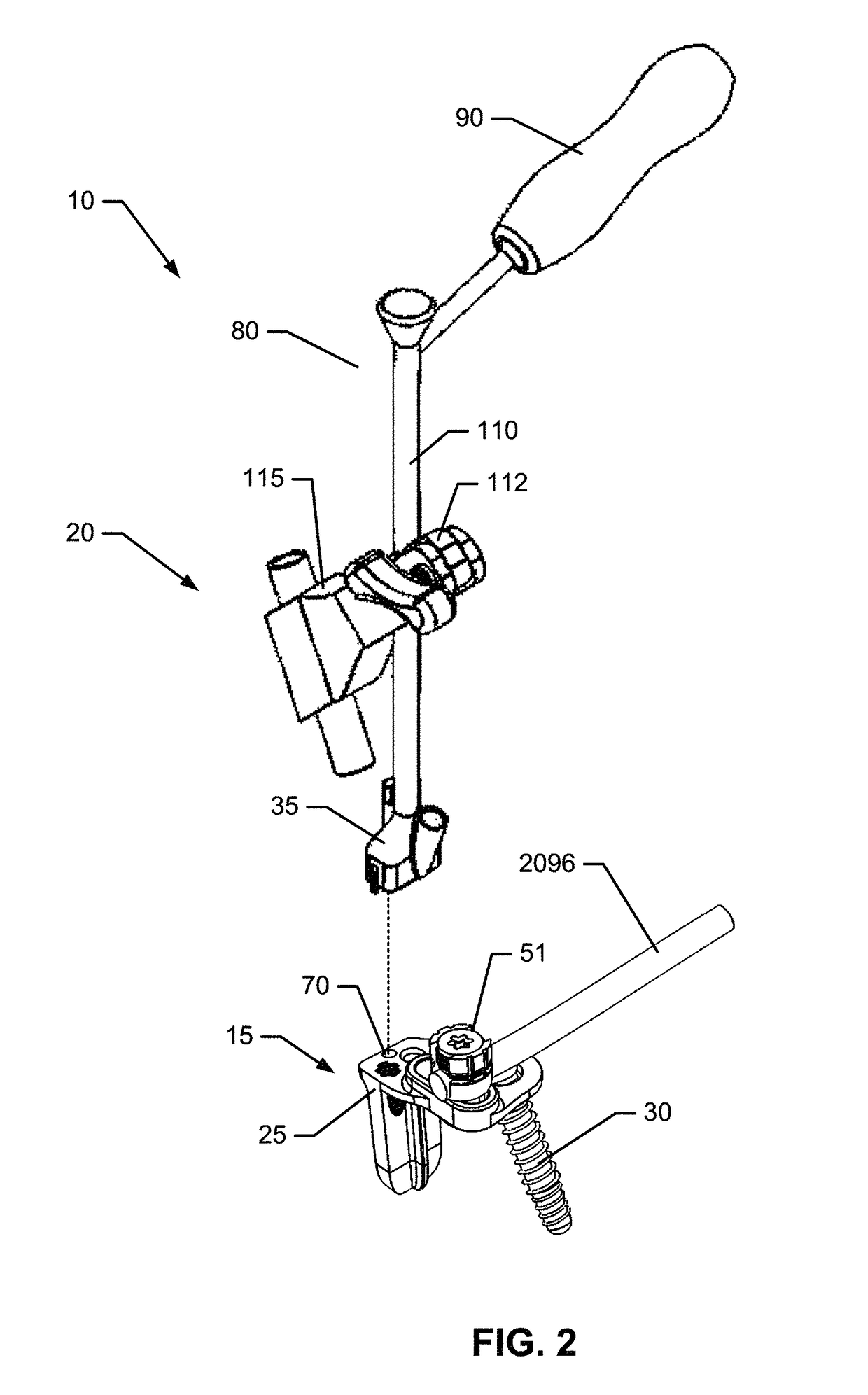Systems and methods for fusing a sacroiliac joint and anchoring an orthopedic appliance
a technology of sacroiliac joints and orthopedic appliances, applied in the field of medical devices and methods, can solve the problems of limited or unconstrained movement, insufficient engagement of existing implant structures with articular surfaces or cortical bone of joints for adequate fixation or fusion
- Summary
- Abstract
- Description
- Claims
- Application Information
AI Technical Summary
Benefits of technology
Problems solved by technology
Method used
Image
Examples
second embodiment
[0159]FIG. 9 is an isometric view of an implant body 25. In this embodiment, an additional lateral attachment bore 75 is provided in the form of an alignment peg receptacle. This alignment peg receptacle 75 may be a blind hole configured to receive an alignment peg protruding from the distal end 35 of the delivery tool 20 (not shown).
[0160]In one embodiment, the center bore 70 may have a diameter ranging from approximately 2 mm to approximately 10 mm. In another embodiment, the one or more lateral attachment bores may each have a diameter ranging from approximately 0.5 mm to approximately 3 mm.
first embodiment
[0161]FIG. 10A is a top view of the implant body 25 illustrated in FIG. 5. In an embodiment, the outer contour 664 of the proximal end 43 of the insertion plate 45 may be contoured to fit within two or more additional alignment pins 150 protruding in a distal direction from the distal end 35 of the delivery tool (not shown). FIG. 10B is the top view of the implant body 25 illustrated in FIG. 10A with the distal end of the delivery tool 20 mounted in place. In this embodiment, the additional alignment pins 150 project in a distal direction to entrap the lateral margin of the proximal end 43. In this configuration, the additional alignment pins 150, in cooperation with a set screw 95 advanced into the central bore 70 of the implant body 25, secure the delivery tool 20 to the implant body 25 and prevent the delivery tool 20 from translating or rotating relative to the implant body 25.
[0162]In an embodiment, the implant body 25 is fixed in place within the joint space of the sacroiliac ...
PUM
 Login to View More
Login to View More Abstract
Description
Claims
Application Information
 Login to View More
Login to View More - R&D
- Intellectual Property
- Life Sciences
- Materials
- Tech Scout
- Unparalleled Data Quality
- Higher Quality Content
- 60% Fewer Hallucinations
Browse by: Latest US Patents, China's latest patents, Technical Efficacy Thesaurus, Application Domain, Technology Topic, Popular Technical Reports.
© 2025 PatSnap. All rights reserved.Legal|Privacy policy|Modern Slavery Act Transparency Statement|Sitemap|About US| Contact US: help@patsnap.com



